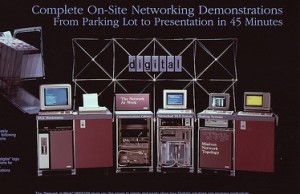Of so many vendors of the boiler, heavy-duty sewing machine or cutter, computer, tractor, or lathe machine you need in your operation, how do you choose the most suitable one?
The general rule is “choose the supplier that gives the best value” for your investment. How does this rule translate into specifics?
Basically, selection of supplier is governed by four general considerations: operating characteristics, engineering features, total economic analysis and qualitative considerations:
Operating characteristics
This is the most influential factor in selecting an equipment supplier. Once the intended function of the equipment is established, design and operating capability are paramount in choosing the specific machine to be purchased.
Design and operating features of a given type of equipment may differ markedly among the machines available from different suppliers. For this reason, the number of suppliers willing to produce a machine capable of meeting every aspect of a purchaser’s operating requirements is frequently limited. This, of course, is more like to be the case for specialized equipment than for general-purpose machines.
Engineering features
Engineering features must be compatible with the buyer’s existing equipment, process and layout. Some of the things to consider are:
- Specific process capabilities: Is performance compatible with that of existing machines, thus minimizing process coordination problems?
- Physical size and mounting dimensions: Will the machine fit into existing available space satisfactorily? Can it be tied up with existing supporting structure easily?
- Flexibility: Can the equipment be moved and relocated without much difficulty?
- Power requirements: Can existing power supplies be used?
- Maintenance: Are lubrication fittings and adjusting mechanisms conveniently located? Is any special maintenance required that cannot be handled by existing maintenance people and programs?
- Safety measures: Does the machine have unsafe features? Is the general safety level comparable with that of existing equipment?
Economic analysis
After several acceptable machines have been found, a thorough evaluation of their relative merits is undertaken. An analysis of each machine must be made, relating to its ultimate cost to its productivity. Several measures of profitability may be used, including payback period method, differential yield method, and minimum annual cost method.
The most commonly used of these analytical tools is the payback period – the length of time it takes for an equipment to recoup its initial cost out of the cash receipts that it generates. Or simply the time it takes for an investment to pay for itself. (For details on how to go about this method, click here.)
Qualitative considerations
Certain qualitative factors concerning suppliers need to be considered in deciding which suppliers to buy from. Some of these are: the location of the supplier’s plant, his financial health, his willingness to render special services or give technical support, etc. These are important because the buyer-producer may require installation assistance, pilot or initial-run support, replacement of parts and, possibly, a warranty adjustment.
Other qualitative considerations are those which indicate the supplier’s ability to produce reliable equipment that performs in accordance with specifications.
A prudent buyer uses various approaches in making such an assessment as the situation demands. A simple technique is to investigate a supplier’s reputation among his customers. A buyer may also conduct plant visits and technical discussions with the vendor’s representatives.
Photo: “Digital Equipment Corp. Network at Work Minivan” by Phil Manker, c/o Flickr. Some RightsReserved

